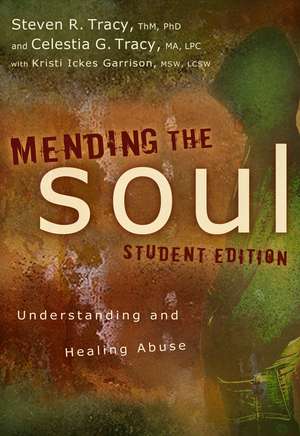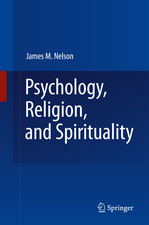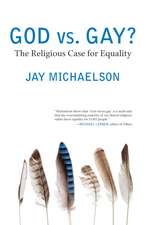Mending the Soul Student Edition: Understanding and Healing Abuse
Autor Steven R. Tracy, Celestia G Tracy Cu Kristi Ickes Garrisonen Limba Engleză Paperback – 17 dec 2011 – vârsta până la 18 ani
Preț: 111.87 lei
Nou
Puncte Express: 168
Preț estimativ în valută:
21.41€ • 23.25$ • 17.98£
21.41€ • 23.25$ • 17.98£
Carte disponibilă
Livrare economică 02-16 aprilie
Preluare comenzi: 021 569.72.76
Specificații
ISBN-13: 9780310671435
ISBN-10: 0310671434
Pagini: 192
Dimensiuni: 152 x 229 x 12 mm
Greutate: 0.24 kg
Ediția:Student
Editura: ZONDERVAN
Colecția Zondervan
Locul publicării:Grand Rapids, United States
ISBN-10: 0310671434
Pagini: 192
Dimensiuni: 152 x 229 x 12 mm
Greutate: 0.24 kg
Ediția:Student
Editura: ZONDERVAN
Colecția Zondervan
Locul publicării:Grand Rapids, United States
Descriere
For teenagers who have experienced any kind of abuse or abandonment, it can often feel like hope is lost and they’re doomed to stay stuck in unhealthy habits and patterns. This teenage edition of Mending the Soul was written to show teens that by following a path of restoration and allowing God’s grace to touch their heart’s deepest wounds, they will find hope and healing as they work through their pain. It will help them navigate the emotional trauma of abuse and abandonment, as well as recognize signs of unhealthy families and dating relationships. Armed with a better understanding of their past and how the effects of abuse can lead to risky behaviors, shame, trauma and isolation—teens will be encouraged to face their brokenness, to heal and forgive and to look toward their hope-filled future. A practical resource for teens, Mending the Soul, Student Edition also offers insight into the struggles parents and ministry leaders face when working with teenage victims of abuse.
Cuprins
Table of Contents: This book will have three sections---Understanding My Past, Admitting My Present, and Looking to My Future. The specific chapter break down is as follows: SECTION 1: UNDERSTANDING MY PAST (four chapters) Students and adults who have grown up with abusive and unhealthy families are not able to articulate that the people who they love have acted abusively and sinfully toward them. Before a person can heal from their past pain they must have an understanding of what was right and wrong and stop minimizing their experiences. They must name it for what it is – abuse. Chapter One: Understanding the Pain of Abuse This chapter teaches that everyone experiences pain in their lives – either through abuse or abandonment. Each type of abuse has a broad spectrum of how it is experienced so explanations, statistics, examples, and student writings illustrate physical, sexual, emotional, verbal, and spiritual abuse.Chapter Two: Understanding the Pain of Abandonment This chapter explains that abandonment, while more difficult to see, is just as damaging as abuse. Just as there are five categories of abuse, the same five categories make up the forms of abandonment. Even though the effects of abuse and abandonment are painful and overwhelming, we can find hope because God redeemed Christ’s horrific experience abuse on the cross. God wants to do the same miracle in our lives and use our pain for His glory. Chapter Three: Understanding Unhealthy Families This chapter discusses the dynamics of unhealthy families and abusers, which are contrasted with examples of healthy families. Since unhealthy families can look good on the outside and abusers often look like regular people, the end of the chapter focuses on the four common characteristics of abusers – blaming, tricking, judging, and intimidating others. Chapter Four: Understanding Unhealthy Dating This chapter teaches students that when they grow up in unhealthy and abusive families they are very likely to experience abuse in dating relationships as well. Unhealthy and healthy relationships are contrasted using examples from teens. A section on healthy sexuality references secular research that indicates the importance of delaying sexual activity until marriage. SECTION 2: ADMITTING MY PRESENT (four chapters) The effects of abuse are complex and many times counter-intuitive; therefore, students often look at their feelings and behaviors and inaccurately conclude that something is wrong with them. In this section, complex psychological factors are discussed in a very simple way allowing students to understand how their past pain is affecting them. Chapter Five: The Effects of Abuse = Risky Behaviors The most common concern from adults regarding adolescence is risky behaviors. Abuse creates unmet needs, and for those students, high risk behavior (drugs, alcohol, sex, gangs, violence) can superficially meet those needs. Students are encouraged to deal with the pain under their behaviors and reach out to others to get their needs met in the ways that God designed. Chapter Six: The Effects of Abuse = Shame This chapter explains the difference between the feelings of guilt and shame. Students begin to assess the things in their life that they have done wrong, which cause legitimate God-given guilt, and the things that have been done wrong to them, which causes unhealthy toxic shame. The link between abuse and toxic shame is given along with steps and activities that will help students begin healing toxic shame. Chapter Seven: The Effects of Abuse = Trauma This chapter summarizes the brain’s and body’s natural reactions to trauma (hyper-arousal, intrusion, and numbing) and how extreme stress and abuse can cause a person to get stuck in this reactionary mode. Trauma causes students to feel powerless, a common underlying contributor to suicide, which is also addressed in this chapter. Chapter Eight















